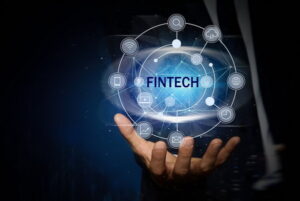Cybercriminals are eager to exploit the new vulnerabilities created by digital financial services. Understanding the security measures in place to protect your digital assets is essential as financial technology continues its evolution.
FinTech Cybersecurity: Threats to Your Security
Cyber threats, specifically targeting mobile banking apps and online investment platforms, constantly confront financial technology companies. Phishing has become more sophisticated as criminals create fake websites and apps to steal login information and personal data. Ransomware attacks are another major risk. Hackers encrypt financial data, then demand payment to unlock it. The result can leave customers without access to their accounts for long periods.
Data breaches are one of the biggest threats facing FinTech companies. They expose personal financial data, such as social security numbers and banking information, to criminals, who may use it for fraud or identity theft. Cybercriminals can gain access to accounts by using stolen credentials or social engineering techniques. They then use this access to make purchases, transfer money, and access financial records.
Cybersecurity Solutions
Modern FinTech firms employ multiple layers to secure customer data and financial transactions. Multi-factor authentication is a crucial first line of defense, as it requires users to confirm their identity using multiple methods, such as passwords or SMS codes. This method reduces the chances of unauthorized account access even if login credentials have been compromised.
End-to-end encryption protects sensitive information both in transit and at rest. This ensures that financial data remains unreadable by unauthorized parties, even if intercepted. Advanced encryption algorithms scramble the data into complex codes, which require specific keys to be decrypted. This makes it nearly impossible for cybercriminals to access meaningful information.
AI and Machine Learning
Artificial intelligence and machine-learning technologies have revolutionized cybersecurity for the financial sector. They enable systems to learn and recognize subtle patterns, which could indicate fraud. Machine learning algorithms analyze the customer’s behavior, their transaction history, and external threat intelligence continuously to create a dynamic risk profile for each transaction and user.
AI-powered systems are able to detect anomalies, like login attempts made from locations that are not typical, transactions that do not match normal spending patterns, and device fingerprints that suggest account compromise, in real time. Over time, the technology improves to be more accurate in distinguishing legitimate customer behavior from potential security threats.
Regulatory Compliance
Financial technology companies are faced with a complicated web of regulations designed to protect the consumer and maintain the integrity of the financial system. Payment Card Industry Data Security Standard, or PCI DSS, is a set of strict guidelines that govern the handling of credit and debit card data. Companies are required to adhere to specific security controls as well as undergo regular compliance audits.
Know Your Customer (KYC) and Anti-Money Laundering Regulations (AML) require FinTech firms to verify customers’ identities and monitor transactions in order to detect suspicious activity that could indicate money laundering or terrorism financing. These compliance requirements lead to the implementation of robust identification verification systems and transaction monitoring tools, which also improve overall cybersecurity.
Best Practices
FinTech customers can play an important role in protecting themselves by using cybersecurity best practices. By creating strong passwords and using multi-factor authentication for every financial account, you can reduce the risk of unauthorized access. Monitoring account statements and transaction history regularly helps to identify suspicious activity quickly. This allows for quick action to minimize any potential damage.
By updating mobile apps and other software, you can ensure that the most recent security patches are installed. This will close any potential vulnerabilities that hackers could exploit. Avoiding public Wi-Fi and using secure networks for financial transactions can prevent the interception of sensitive information.
Future Trends
In the future, FinTech cybersecurity is likely to see an increase in biometric authentication, such as facial recognition, finger scanning, and speech recognition. These methods are more convenient and secure than traditional passwords. Blockchain technology is promising for creating tamper-proof transaction records, enabling secure and decentralized financial services that reduce single points of failure.
Quantum computing is both an opportunity and a threat. It could render current encryption methods obsolete while also enabling a new form of cryptographic security. FinTech companies have already begun to prepare for the transition by researching quantum-resistant encryption algorithms. Zero-trust models that assume no device or user can be trusted are becoming more common in financial services. They require continuous verification of the user’s identity and device security during each session, rather than relying solely on perimeter-based approaches.
Securing Your Financial Future
As threats and protective measures evolve, the cybersecurity landscape for financial technologies continues to change. FinTech companies are investing heavily in the latest security technologies and complying with regulatory requirements. However, consumers must be vigilant and follow good security practices to safeguard their financial data. By staying informed and understanding these security measures, you can make more informed decisions about the FinTech services that you trust and how they should be used.
FAQs
1. What can I do to determine if my FinTech application is secure?
Check for security features such as multi-factor authentication and encryption notifications. Also, make sure to check regularly for security updates. Check to see if the firm is regulated and has transparent policies on privacy.
2. How should I act if I suspect fraud on my account
Contact your financial institution immediately, change your passwords, and closely monitor your accounts. Report the incident and place fraud alerts on credit reports.
3. Are digital wallets more secure than traditional banking?
Digital wallets use advanced security features like biometric authentication and tokenization, but the security of these wallets ultimately depends on user behavior and implementation rather than technology.
4. How do FinTech companies protect my data?
Security audits, encryption, secure servers, and access controls are all part of the security measures that companies use. Financial regulations also mandate that they adhere to specific security standards.
5. Is it a concern that financial data is stored in mobile apps?
Apps that are reputable use security measures at the bank level. However, you should practice good security hygiene, using strong passwords and enabling security features.




